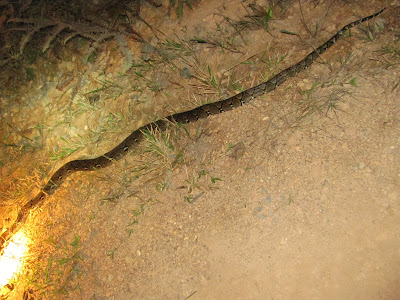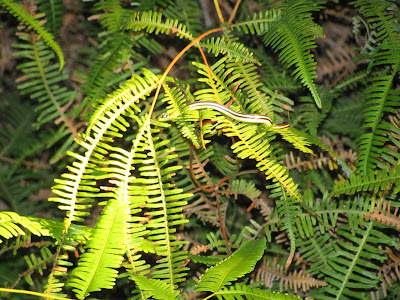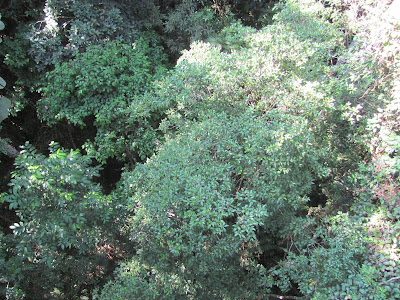Some of the mammals living in Taman Negara include Asian Tiger, Tapir, Sumatran Rhinoceros, Malayan Gaur (seladang-a large wild cow), Asian Elephant, and a number of smaller deer species. Because these animals are nocturnal and secretive, it is unlikely that you are going to be able to see these animals while hiking around in the forest. However, it is still really cool to be hiking around in a forest where you know there are rhinos, tigers, and elephants!
One way to try to see them is to try to attact animals to where you are. At several places around Taman they have build hide, tall wooden buildings that are located near salt licks where animals will come at night to get salt. Most of the hides are far enough away from where I was staying that using them would involve sleeping in them overnight. Becuase I wasn't quite ready to do that, I only was able to visit the Tahan Hide that was located just a short walk from my cabin.
The Tahan Hide is located near a field (I think that the Wildlife Department cut down some trees to create the field so that visitors could see some wildlife) where animals come to forage and get salt. Here is a view of the hide in the middle of the afternoon. Not too much going on.

The first time I went to the hide was at night. Using the brightest light on my head lamp I was able to see the red eye-shine from several animals moving about in the field. From the movement of the eyes, it looked like they would feed on the grass and then pick their heads up to take a look around. Some of these animals got close enough to the hide that if you squinted really hard you could pretend that you could see the dark shape of their body. However, there was no way that I could tell what I was looking at.
The next day I spent a short amount of time at the hide before dinner while it was just starting to get dark. I saw one deer dash across the field, but that was all. The guys at the Wildlife Department information booth suggested that these were most likely Sambar Deer.

photo from Wikipedia
http://en.wikipedia.org/wiki/Sambar_(deer)The final night I was there I decided that I wanted to sit at the hide for about an hour prior to sunset so that I could all of the action as night approached (I didn't want to miss the tiger attacking an elephant). One interesting observation that I had was that when the call for prayer was played on the loud speakers of the mosque across the river in Kuala Tahan, it appeared that the birds started singing more (maybe I can get a grant to study this).
Here is the view when I arrived at the hide about an hour before sunset.

It is starting to get darker. I am sure that the animals will be showing up soon!

Now it finally dark. I guess it is time to go home except.....

When it got so dark that I couldn't see anything, I figured that it was time to give up and head out. I made one last pass around the field with my spotlight and noticed an eye-shine moving out of the forest into the field. Over the next 15 minutes or so the animal moved much close to me, but I still never got a good look at it. I am guessing that it was a
T. rex.


























































